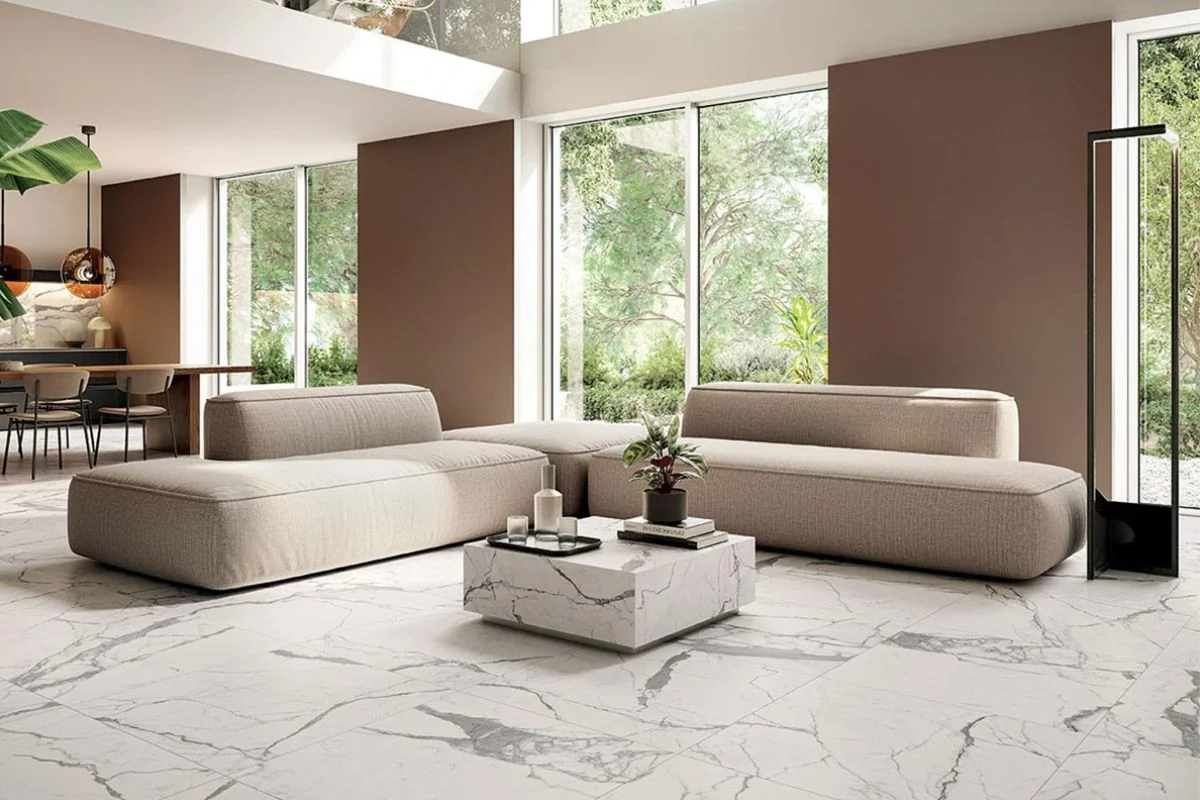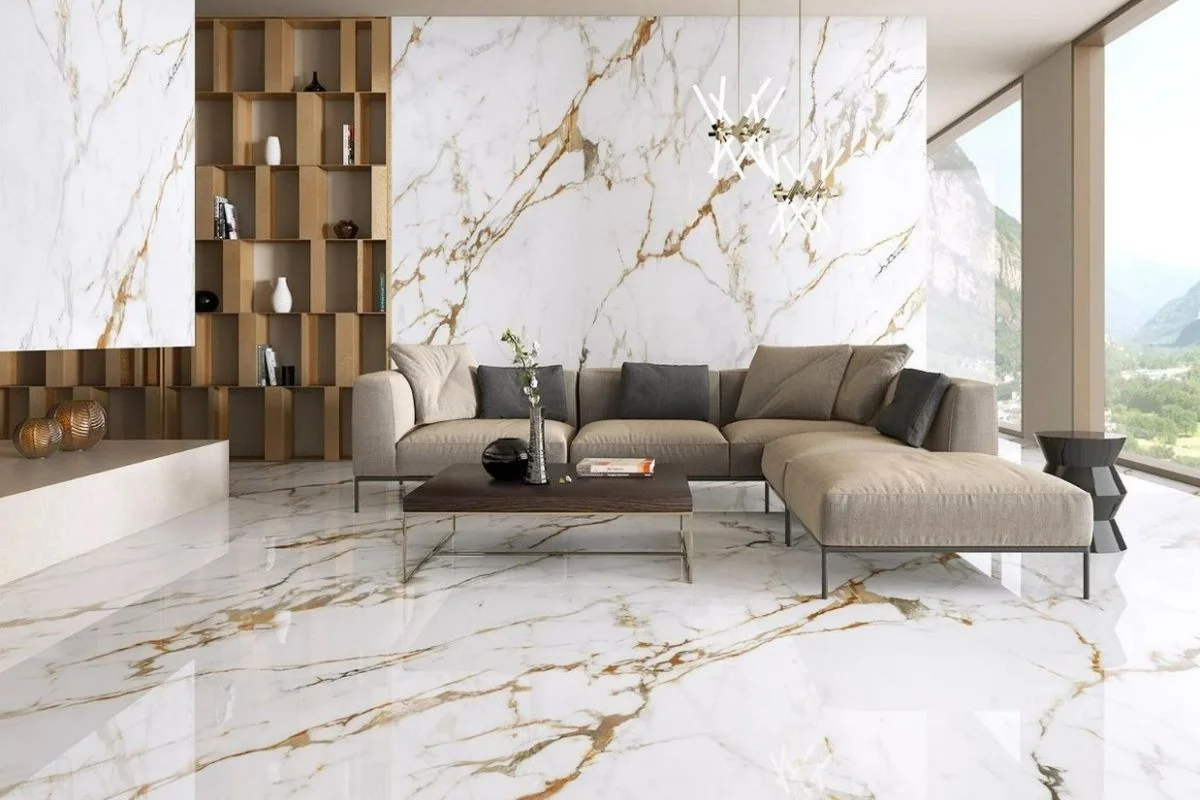In the world of interior design, trends come and go, but one element that has remained steadfast in its appeal is marble flooring. Renowned for its timeless elegance and luxurious aesthetic, marble flooring continues to be a favored choice among homeowners and designers alike. As we navigate through the ever-evolving landscape of design preferences, it’s fascinating to observe how marble flooring continues to adapt and evolve to suit diverse styles and tastes.
In this exploration of marble flooring trends, we embark on a journey to uncover the latest design options that cater to every style imaginable. From classic to contemporary, minimalist to maximalist, marble flooring offers a versatile canvas upon which to create stunning and personalized interiors. Join us as we delve into the world of marble flooring trends, discovering innovative patterns, color palettes, and finishes that inspire and elevate any space. Whether you’re seeking inspiration for a modern renovation or simply appreciate the enduring allure of marble, this guide promises to ignite your imagination and showcase the limitless possibilities of this iconic flooring material.
Brief overview of marble flooring’s enduring popularity
Marble flooring stands as a timeless symbol of elegance and refinement in the realm of interior design. Its enduring popularity spans centuries, with roots deeply embedded in ancient civilizations such as Greece and Rome. Renowned for its natural beauty, durability, and luxurious appeal, marble flooring continues to captivate homeowners, designers, and architects alike. Its classic aesthetic and ability to effortlessly elevate any space have cemented its status as a sought-after choice for both residential and commercial projects worldwide. As we delve deeper into the world of marble flooring, we uncover not just a flooring material, but a statement of timeless sophistication and enduring style.
Types of Marble Flooring
Marble flooring offers a diverse array of options, each characterized by distinct patterns, colors, and veining. Understanding the different types of marble can help you select the perfect flooring option for your space. Let’s explore the various types:
Carrara Marble:
- Known for its soft, grayish-white background with subtle veining.
- Frequently used in classic and contemporary designs alike.
- Ideal for adding a touch of elegance to bathrooms, kitchens, and living areas.
Calacatta Marble:
- Recognizable for its bold, dramatic veining and bright white background.
- Offers a luxurious and sophisticated look that enhances any space.
- Often chosen for high-end residential and commercial projects, including countertops and feature walls.
Statuario Marble:
- Features striking, thick veining against a predominantly white background.
- Exudes a sense of opulence and grandeur, making it a popular choice for upscale interiors.
- Frequently used in flooring, wall cladding, and decorative accents to create a statement-worthy aesthetic.
Emperador Marble:
- Characterized by rich brown hues and prominent veining.
- Adds warmth and depth to interiors, particularly in traditional and rustic settings.
- Well-suited for flooring in entryways, foyers, and living rooms where its earthy tones can create a welcoming ambiance.
Crema Marfil Marble:
- Boasts a creamy beige background with subtle veining and fossilized formations.
- Offers a soft, understated elegance that complements a variety of design styles.
- Often used in residential and commercial spaces to create a sense of warmth and sophistication.
Travertine Marble:
- Characterized by its porous surface and natural color variations, ranging from ivory to walnut.
- Adds a rustic charm and organic texture to interiors, reminiscent of ancient Roman architecture.
- Frequently used in flooring, accent walls, and outdoor spaces to create a seamless connection between indoor and outdoor environments.
Advantages and Disadvantages of Marble Flooring
Advantages:
- Timeless Elegance: Marble flooring exudes a timeless beauty and elegance that can enhance the aesthetic appeal of any space.
- Durability: Marble is a durable natural stone that can withstand heavy foot traffic and last for generations when properly maintained.
- Variety: Marble comes in a wide range of colors, patterns, and veining, allowing for endless design possibilities and customization options.
- Heat Resistance: Marble flooring remains cool to the touch, making it an excellent choice for warmer climates or areas with underfloor heating systems.
- Increased Property Value: Installing marble flooring can increase the resale value of a property due to its perceived luxury and durability.
Disadvantages:
- Cost: Marble flooring is generally more expensive compared to other flooring options such as ceramic tile or vinyl flooring. The cost can vary depending on the type and quality of marble chosen.
- Porous Nature: Marble is a porous material, which makes it susceptible to staining and etching from acidic substances like citrus juices and vinegar. Regular sealing is necessary to protect the surface.
- High Maintenance: Marble flooring requires regular cleaning and maintenance to preserve its appearance and prevent staining. Specialized cleaning products and techniques may be necessary to keep marble looking its best.
- Susceptibility to Scratching: While marble is durable, it is not scratch-resistant. Heavy furniture or sharp objects can scratch the surface of marble flooring, detracting from its appearance over time.
- Slippery When Wet: Marble flooring can become slippery when wet, posing a slip hazard, especially in areas prone to moisture such as bathrooms and kitchens. Adding rugs or mats can help improve traction.
Marble Flooring Installation Guide
Installing marble flooring requires careful planning, precision, and attention to detail to ensure a flawless finish that enhances the beauty of your space. Here’s a comprehensive guide to help you navigate the installation process:
Pre-installation Considerations:
- Subfloor Preparation: Ensure that the subfloor is clean, level, and free of any debris or moisture. Repair any cracks or imperfections in the subfloor to provide a smooth surface for installation.
- Acclimatization: Allow the marble tiles to acclimate to the room’s temperature and humidity levels for at least 48 hours before installation to prevent expansion or contraction post-installation.
- Layout Planning: Determine the layout of the marble tiles, considering factors such as room dimensions, patterns, and focal points to achieve a balanced and visually appealing design.
Tools and Materials:
- Marble Tiles: Choose high-quality marble tiles in the desired size, color, and finish for your project.
- Thinset Mortar: Select a suitable thinset mortar recommended for marble installation, considering factors such as bonding strength and compatibility with the substrate.
- Trowel: Use a notched trowel to apply the thinset mortar evenly onto the substrate, ensuring proper coverage and adhesion.
- Tile Spacers: Use tile spacers to maintain consistent grout joints and spacing between marble tiles for a professional finish.
- Wet Saw: Use a wet saw with a diamond blade to cut marble tiles accurately to fit around edges, corners, and obstacles.
Installation Process:
- Apply Thinset Mortar: Use a trowel to apply a thin layer of thinset mortar onto the substrate, working in small sections at a time.
- Set Marble Tiles: Place marble tiles firmly into the mortar bed, pressing down evenly to ensure proper adhesion and alignment with neighboring tiles.
- Maintain Consistent Joints: Insert tile spacers between each tile to maintain consistent grout joints and spacing throughout the installation process.
- Cut Tiles as Needed: Use a wet saw to cut marble tiles to fit around edges, corners, and obstacles, ensuring precise cuts for a seamless finish.
- Allow Mortar to Cure: Allow the mortar to cure according to the manufacturer’s instructions before proceeding with grouting.
Grouting and Sealing:
- Grout Application: Once the mortar has cured, remove tile spacers and apply grout using a rubber float, ensuring full coverage and filling all grout joints.
- Clean Excess Grout: Use a damp sponge to remove excess grout from the surface of the tiles while ensuring that the grout lines remain filled and uniform.
- Seal Marble Tiles: Apply a penetrating sealer to the marble tiles to protect against stains, moisture, and etching. Follow the manufacturer’s instructions for application and reapplication as needed.
Finishing Touches:
- Clean and Polish: Once the grout has fully cured, clean the surface of the marble tiles with a neutral pH cleaner and polish to restore their natural luster.
- Install Transitions: Install transition strips or thresholds as needed to create seamless transitions between marble flooring and adjacent surfaces.
- Final Inspection: Conduct a final inspection of the installed marble flooring to ensure that all tiles are securely bonded, grout lines are uniform, and the overall finish meets your expectations.
Maintaining Marble Flooring: Tips and Best Practices
Marble flooring is not only prized for its timeless beauty but also for its durability when properly maintained. Implementing a regular maintenance routine can help preserve the natural luster and elegance of marble flooring for years to come. Here are some essential tips and best practices for maintaining marble flooring:
Regular Cleaning:
- Use a soft, damp cloth or mop to remove dust, dirt, and debris from the surface of the marble flooring.
- Avoid using abrasive cleaners or harsh chemicals that can damage the marble’s surface and cause etching.
- Consider using a pH-neutral cleaner specifically formulated for marble surfaces to maintain its natural shine without causing harm.
Spill Cleanup:
- Immediately wipe up spills and stains using a clean, damp cloth to prevent them from seeping into the marble and causing discoloration.
- For stubborn stains, gently blot the affected area with a mixture of mild dish soap and warm water, followed by rinsing with clean water and drying thoroughly.
Sealing:
- Regularly seal the marble flooring to protect it from stains, moisture penetration, and etching caused by acidic substances.
- Choose a high-quality penetrating sealer specifically designed for natural stone surfaces and follow the manufacturer’s instructions for application and reapplication intervals.
Preventive Measures:
- Place doormats or rugs at entryways to trap dirt, grit, and moisture from shoes, reducing the risk of scratching and staining the marble flooring.
- Use protective pads or coasters under furniture legs to prevent scratches and indentations on the marble surface.
- Avoid dragging heavy objects or sharp items across the marble flooring, as this can cause scratches, chips, and other damage.
Routine Maintenance:
- Periodically polish the marble flooring using a marble-specific polishing compound or powder to restore its natural shine and luster.
- Consider hiring professional marble restoration and maintenance services for deep cleaning, honing, and polishing to rejuvenate the appearance of heavily worn or damaged marble flooring.
Regular Inspection:
- Conduct regular inspections of the marble flooring to identify any signs of wear, damage, or deterioration.
- Address any issues promptly to prevent them from worsening and requiring more extensive repairs in the future.
Conclusion
In conclusion, marble flooring stands as a timeless symbol of elegance, luxury, and sophistication in the world of interior design. Its natural beauty, durability, and versatility make it a coveted choice for homeowners, designers, and architects alike. Throughout this guide, we’ve explored the enduring appeal of marble flooring, from its historical significance to its modern applications and maintenance practices.








